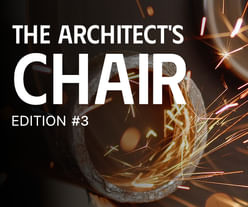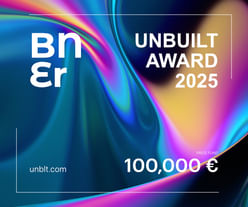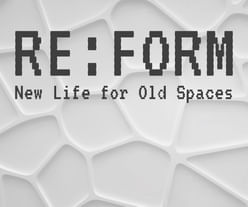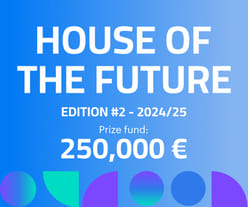
The Prix Versailles has revealed its list for the 2024 edition of the World's Most Beautiful Emporiums List. Each is said to exhibit a number of sustainable credentials and will next compete against other category winners for one of three 2024 World Titles – Prix Versailles, Interior and Exterior – that are expected to be announced from the UNESCO Headquarters on December 2nd.
"Emporiums are amongst the top identifiers and influencers of today’s changing societies. Because
of their heightened sensitivity to visitor numbers, they are compelled to reinvent themselves in the
most promising ways," Jérôme Gouadain, the Secretary General of the Prix Versailles, said of the 2024 field. "This collection, this sample, of the world’s most beautiful emporiums, demonstrates the many paths
that lead to business that is truly open to the aspirations, needs, well-being and environment of local
inhabitants.
The pleasure derived from visiting a place generates moments that deliver sensations, emotions, an
escape from the mundane and interpersonal connections. These highly cultural benefits also contribute to the shared experience – a laudable ambition in favour of sustainable cities."
The next World Selections – Airports, Campuses, Passenger Stations and Sports – will be announced on September 30th. This year's Beautiful Emporiums List official selection is below.
Dior, Geneva, Switzerland, Christian de Portzamparc

Project description: "Nearly two years to the day after the historic reopening of its iconic 30 Montaigne boutique in Paris, a new and majestic floral standard for the Dior Maison now flies just a few cable lengths from the Swiss Alps and Lake Geneva, at the very heart of the city. The building, designed by architect and Pritzker Prize laureate Christian de Portzamparc, borrows its poetic, revolutionary appearance from the world of couture.
Thanks to its graceful curves, the sun seems to bedeck the façade with genuine warmth that is not without character, while the night endows the structure with gleaming appeal. Filling its seven storeys with both airy and more intimate spaces, the building displays an ultra-contemporary interior concocted by Dior Architecture and supported by pieces from many different artists. At this new 'refuge of the marvellous' (in the words of Monsieur Dior), architecture has never been so well-suited to Dior’s 'realm of dreams.'"

Project description: "How can a shopping hotspot be built that spans a total of more than 370,000 m² in an eco-friendly 'green belt' whilst making sure that no construction stands more than 1.5 metres above the ground? In Chengdu, this phenomenal project was made possible thanks to the work of the London-based studio Sybarite, in collaboration with ECADI.
In the city’s vertical landscape, below a horizontal oasis, SKP and its fantastic shops are
spread out over three underground storeys,
leaving an incomparable view of a curious
sort of Central Park which covers 280,000 m²
of land and is home to some 300 species of
plants.
Beyond its painstaking, futuristic architecture,
SKP Chengdu is a masterful illustration of the
possible convergence of nature and commerce, in which urbanisation protects and
cultivates ecology and biodiversity."
Nouvelles Galeries, Annecy, France, Manuelle Gautrand Architecture

Project description: "In the 1970s, the circular arrangement of the original building was only intended to stand out against Annecy’s homogeneous environment. But the building, in its initial form, took root in the town’s hearts, minds and heritage. The idea then became to make the place more up-to-date and a more integral part of Annecy, without dampening its personality or its radicality. As the new setting for Galeries Lafayette and some forty-odd new shops, the site has been transformed, letting natural light and vegetation in – the ultimate ambition for this project in the town centre.
Five new satellites have been unfurled around
the existing spaces, bringing with them a
sense of unity, airiness and togetherness
through a more structured alignment with
the roads around the location and increasing
its openness to the outside world thanks to
rounded bay windows and accessible rooftop
terraces.
This place may well have earned the title of
masterpiece that has been attributed to the
work of architect Manuelle Gautrand, because
who wouldn’t see this form of tamed modernity as an example of a response to the latest
urban challenges?
Within this sweeping vision that recognises
the appeal of materials as well as the appeal
of people, these façades with their seemingly
moving radiance encourage us to dream 'faster, higher and stronger.'"
Sabyasachi Mumbai, India, Open to Sky Architects

Project description: "Founded 25 years ago, Sabyasachi is a young,
enchanting brand and the heir to an extraordinary Indian tradition and legacy.
Its largest flagship store sits inside a majestic
neoclassical monument near Horniman Circle,
built in the early 20th century with exteriors
that have now been meticulously restored.
Amidst today’s mania for megalopolises,
Sabyasachi provides a welcome contrast in
the form of slow, authentic luxury, opposing
its complex and unconventional vision of modernity to contemporary aspirations towards
simple, clean lines.
Borrowing from immersive practices, the place
– described as labyrinthine – is an invitation
for shoppers to lose themselves amongst endless wares and in the light reflecting off fine
jewellery and the preciousness of the antique
furniture and objets d’art scattered through
the rooms, not to mention the extravagance
of a hidden space that completes the exaltation of the senses with a tribute to India’s tea
ceremony.
At Sabyasachi, there was nothing in the architecture to suggest it could fade so much into
the background. And yet…"
Bookshops at the Colosseum Rome, Italy, Migliore+Servetto

Project description: "A new pictorial representation of present-day
Rome, the Mondadori Electa bookshops located inside the Colosseum are part of a broader renovation project at the monumental,
world-famous archaeological park.
Designed by Milan-based Migliore+Servetto
Architects and by Studio Leonardo Sonnoli
in terms of the graphic arts, this undertaking
distinguishes itself for the discreet yet optimal
staging of the different spaces, recreating the
site’s 'amphitheatrical' character with a modern – and certainly original – take on a Wunderkammer.
The carefully selected colour palette, the variations on framing (the project’s real stylistic
guiding thread) and the goods themselves all
help to tell a rich, amazing story that effectively awakens curiosity and a desire to learn.
Here, visitors will find profoundly Roman décor, perfectly frozen in time."
Boucheron Ginza, Tokyo, Japan, Lecoadic-Scotto Architecture

Project description: "Boucheron Ginza – the brand’s second biggest boutique after the one in Paris – was inspired by the original concept from Lecoadic-Scotto Architecture, with a reinterpretation of the “winter garden” at 26 place Vendôme. Nestled in Tokyo’s super-chic Ginza district, this new location plays on its Parisian allure that leaves no one indifferent. The façade is an enormous glass wall which is transparent during the day and shifts at nightfall into a digital forest that changes with the seasons.
It is true that the building is a surprise, in terms of both the ode to nature that it sings and the minimalistic interior design featuring myriad alcoves. Around the original staircase conceived as a vertical garden, each of the four floors delivers a different experience, but always one that is simultaneously elegant and exotic, in a fusion of French and Japanese culture. After visiting the pre-existing configurations, the Maison’s most innovative creations and materials are unveiled for exploration. Shoppers are taken on a lush green journey that feels far from the hustle and bustle of Ginza."
Parqal Parañaque, Philippines, Aedas

Project description: "Inspired by a play on the words 'park' and 'kalye' (meaning 'street' in Tagalog), Parqal has materialised in Aseana City, the central business district of the city of Parañaque in Metro Manila. Its originality stems from its main street which is protected by a glass roof that stretches more than 400 metres in length, allowing natural light to filter through – proof that an emporium can be a feat of urban planning, especially given that this example occupies a piece of city.
Far from dressing itself up in the usual environmental finery, Parqal imposes its inclinations by encouraging people to move about walking, cycling or taking public transport within a complicated architectural setting, making use of both Filipino tradition and Chinese and Spanish influences. The concept of a '15-minute city' – which aims to make essential facilities and amenities accessible in no more than 15 minutes on foot – is a sizeable challenge, particularly when you consider sport and culture to be essential. This is precisely what Parqal has managed to achieve, with excellence and intelligence, undoubtedly establishing a role model for sustainable urban development in the Philippines."

The Architect's Chair / Edition #3
Register by Wed, Jan 15, 2025
Submit by Tue, Feb 18, 2025

100,000 € Prize / Buildner's Unbuilt Award 2025
Register by Thu, Oct 30, 2025
Submit by Thu, Nov 20, 2025

Re:Form – New Life for Old Spaces
Register by Wed, Jan 22, 2025
Submit by Tue, Sep 2, 2025

250,000 € Prize / HOUSE OF THE FUTURE 2024/25
Register by Wed, Apr 30, 2025
Submit by Mon, Jun 2, 2025
1 Comment
Regarding the project by Open to Sky Architects. Last year Town & Country visited the (then) "newly refurbished neo-classical building". Relatedly in 2018 Architectural Digest India toured Sabyasachi Mukherjee's "grand Calcutta mansion".